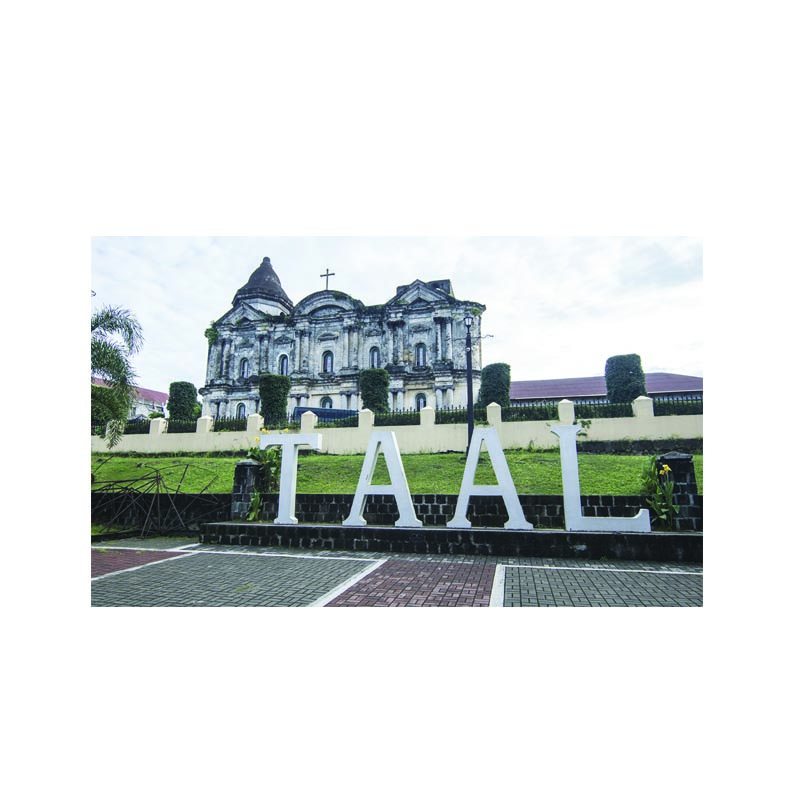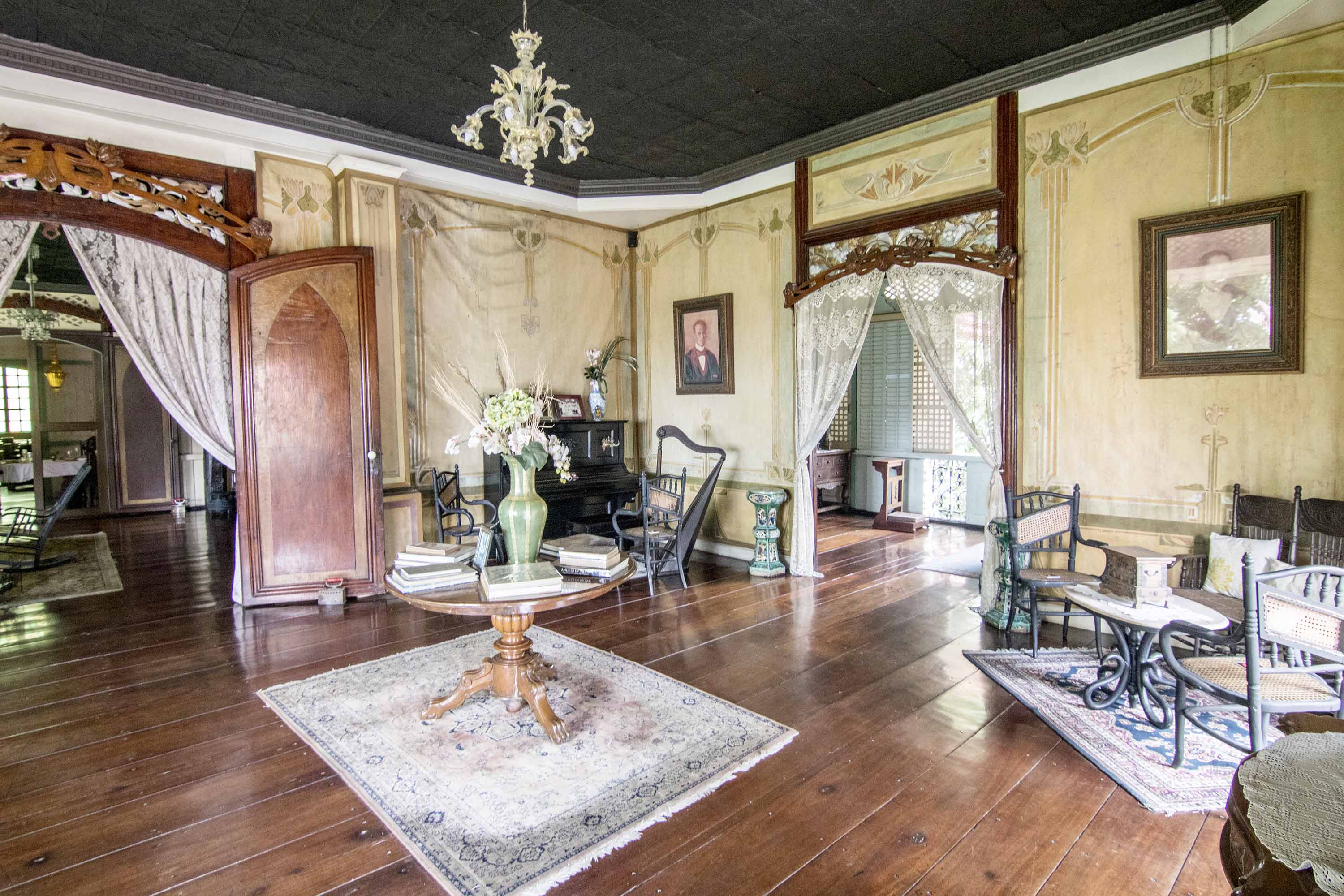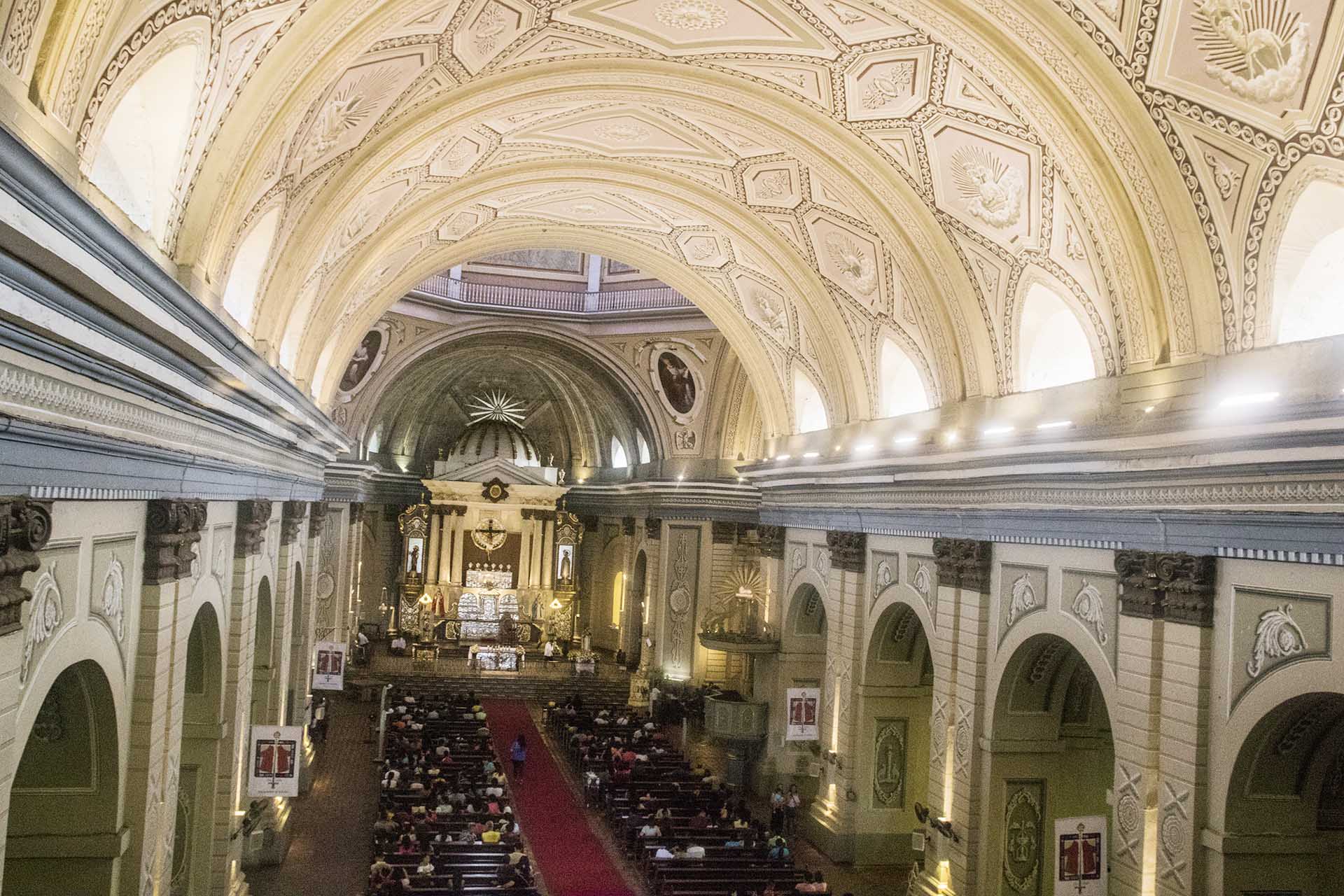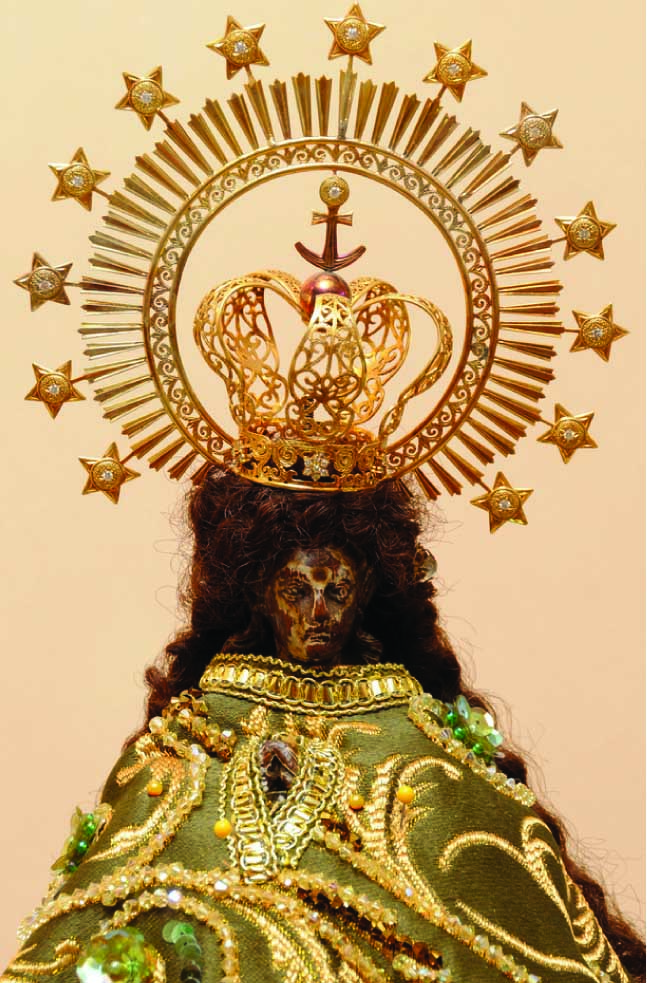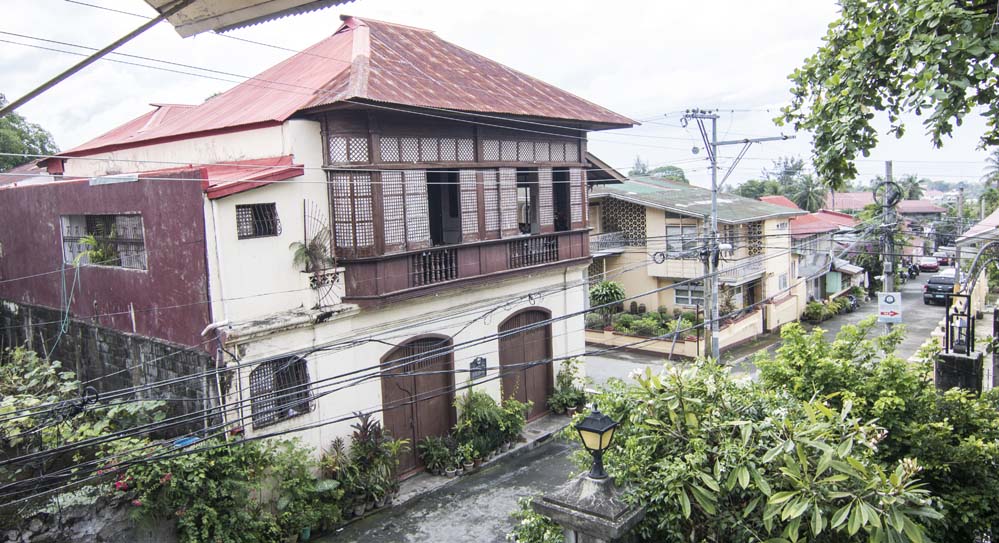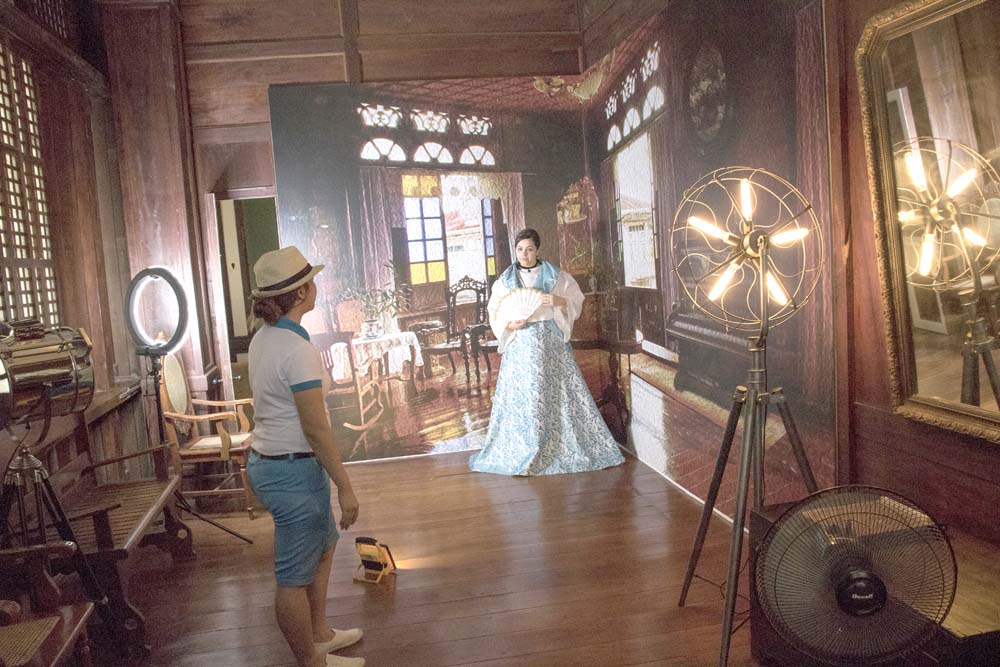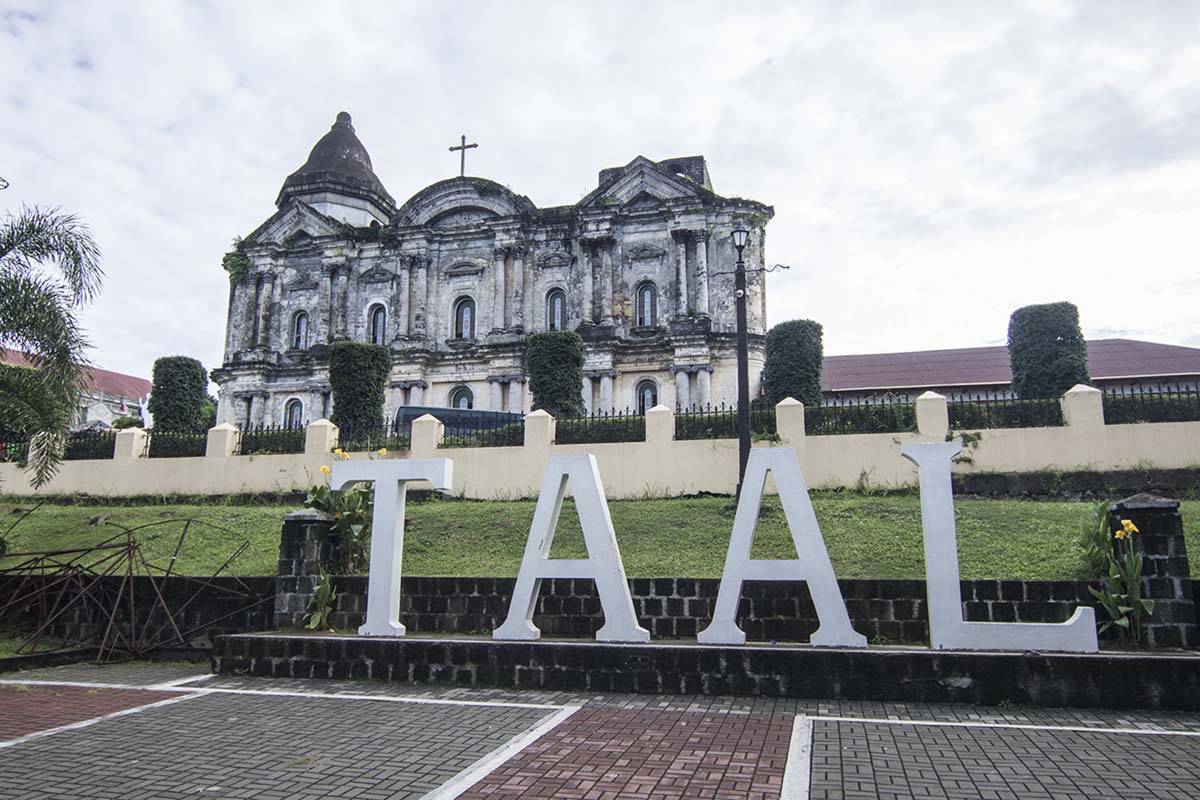W hen I visited Taal for the very first time last year, I was smitten. So smitten that I have gone back three more times! The town’s unique blend of culture, history and friendly people irresistibly draws me back. I would promote Taal at every opportunity I get to friends, family and acquaintances, hoping they would get interested and urge me to take them there.
Taal Basilica
Taal Basilica, my first stop, is reputedly the biggest Catholic Church in Asia. But it is not its immense size that draws me (88.6 meters in length and 48 meters in width), nor is it the beautiful interior with its tromp l’oeil ceiling, painted by Italian Giovanni Dibella, one of the two artists who did the ceiling at San Agustin Church in Intramuros.
What keeps drawing me back to this 140-year-old church is its 96-meter bell tower. It is open to the public and at every visit, I would find myself huffing and puffing up its narrow and steep staircase. But once I reach the top, my breath would be taken away again, this time by the view. Not only can you see the towns of Taal and Lemery, you would see all the way to the horizon at Balayan Bay. It is a sight not to be missed.
From the bell tower, Taal doesn’t seem to have a lot of fast food and shopping malls. In fact, the only signs of “progress” is the town’s only branch of 7-11 convenience store. From the church’s vantage point you can see that the town still has a lot of Spanish colonial homes, or bahay na bato. Many of them were built during the mid-19th century, when the town became wealthy due to its sugar trade. Many bahay na bato have been restored, with some open to the public.
Villavicencio House
One of the more well-known houses not far from the church is the Villavicencio house. It is actually composed of two houses – one built in 1850 and the other in 1870. Both belonged to Eulalio Villavicencio, owner of a shipping company.
The 1850s house was built by Eulalio’s parents as the family residence. The 1870s house, also known as Villavicencio-Marella house, was built as a wedding gift to Eulalio’s bride, Gliceria Legaspi Marella. Originally, the two houses were linked by a bridgeway. But by the 1990s, the bridgeway was in such bad condition that it was done away with.
A visit to these two houses begins with viewing a short video about the 1850s house’s history and its owner. I was surprised to see how involved Eulalio and Gliceria were in the country’s struggle for independence.
After the video, visitors are ushered to the second floor. Friends who have accompanied me to these two houses would oohh and aahh at the formal interior of the two houses.
But what they don’t know is that in 1990, the two houses were decrepit. In fact, the 1870s house’s leaking roof caused the floorboards to be rotten and the hand-painted canvas wallpaper to fade.
Restoration only began when Montserrat Villavicencio Joven, Doña Gliceria’s granddaughter, inherited the house.
Montserrat’s daughter, Jocelyn, then initiated repair and restoration work with her husband, Adviculo Cuay Quiblat. Today, the two houses are popular location shoots for film producers and directors who seek an authentic setting for their period films.
Goco House
While “dignified” best describes the feel of the Villavicencio house, the Goco house across the street exudes a more relaxed and cozy atmosphere. It was built in 1876 by Juan Cabrera Goco, who served as treasurer for the Filipino Revolutionary Movement. Like the Villavicencio house, the Goco house was restored in the 1990s, but whereas the Villavicencio house stayed as authentic as possible, the Goco house is a mix of antique furniture and family pictures, crochet table cloth, stuffed toys and abstract paintings.
The man responsible for today’s Goco house is Don Juan Goco’s great grandson Pio Goco. A tireless promoter of Taal and the province of Batangas, Pio is my go-to-guy if I have any questions about Taal and Batangas. Because he is very knowledgeable about the town and its history, I would recommend Pio if you need a guide for Taal. His tour stands out as it includes a home cooked meal with dishes that Taal is known for, such as adobong dilaw (adobo with turmeric).
Another great promoter of the town’s heritage is businessman Ernie Villavicencio, a Don Eulalio descendant. He is one reason why the people of Taal are conscious about their heritage. Having been exposed to heritage conservation when his ancestral home was being restored, he is now a passionate advocate in protecting Taal’s unique heritage.
In 2008, Ernie formed with other homeowners the Taal Active Alliance League (TAAL). The group aims to promote and protect the town’s unique cultural heritage.
Paradores del Castillo
One of the biggest projects Ernie embarked on was in 2009 when he bought the Del Castillo house from his relative just around the corner from the Villavicencio house, and converted it into a hotel in 2013.
It was no easy task. When they stripped the house down to its framework, they found that it was leaning to one side. But Ernie and his team persevered and in 2015, the hotel Paradores del Castillo was opened. Not only have they succeeded in preserving the heritage of the house, they also expanded it and offered the comforts demanded by modern day travelers.
On my last visit, I discovered that the hotel had acquired yet another house across the street and converted it into Casa Recuerdos. It is a photo studio where people can rent and dress up in Spanish colonial era costumes and accessories.
The cost is P300 per costume and includes two printed copies of the photo shoot. And if you wish, you can wear the costume outdoors and be photographed out on the street. Definitely a great idea for a souvenir from Taal. By the way, the photo studio is open to the public and is not limited to hotel guests only. Just ask the front desk of the hotel if you are interested.
Our Lady of Caysasay
Since the hotel sits atop a cliff, you can get a great view of Taal from the back garden, and of the Pansipit River and the neighboring town of Lemery. You can also see the Church of Our Lady of Caysasay. To get to the church from the hotel, you need to climb down the San Lorenzo Steps. Originally, the 125 stone steps were called hagdan-hagdan, but it has since been renamed after the first Filipino Catholic saint. If your legs can take it, you can walk further down the steps of the church to find the statue of Our Lady of Caysasay, which is venerated by the people of Taal as they consider it miraculous. To this date, water from the nearby well is known for its healing powers. It is bottled and blessed by the priest and given to sick people.
The story about the Virgin tells how in 1603, the mestizo fisherman Juan Maningcad miraculously had a bountiful catch when he cast his net in the Pansipit River. In the net was a tiny figure, which he recognized as that of the goddess Ma-Zu (Ma-cho in Hokkien) who takes care of seafarers. The image is always placed at the helm of voyagers’ boats. The parish priest, however, insisted that the statue was that of Virgin Mary and had it kept at the Taal Basilica. It would disappear at night and reappear the following morning. Hence, a shrine was built where the image was found.
The Chinese venerated the image both as Virgin Mary and Ma-cho. At the altar they offer food, incense, divination tablet and sticks. Devotees from all over Luzon flock to Taal during its anniversary. The image is much revered by the people for saving the town during the 1754 volcanic eruption. The townspeople and the town priest sought refuge at the Church of Our Lady of Caysasay. After the eruption, a new town center was established on a hillside near the Caysasay Shrine, overlooking Balayan Bay. So renowned was the Lady of Caysasay that every galleon that passed by Taal fired their cannons in salute.
More heritage houses
Taal still has more to offer. A short walk from the Villavicencio house at Calle Marcela Agoncillo are more heritage houses belonging to Leon Apacible (one of the country’s first diplomats and President Aguinaldo’s finance officer) and Marcela Agoncillo (sewer of the first Philippine flag). Both houses have been beautifully restored to its original condition. As with the Villavicencio house, it starts with a short video show. There are also exhibits that give more details about the lives of the owners and their contributions to Philippine history. Also on this street is the Galleria Taal which showcases the history of photography in the Philippines. It was the ancestral house of the Ylagan-Barrion clan, before it was converted by Manny Barrion into a museum. The focus of the exhibit is Barrion’s collection of antique and modern cameras as well as some of the country’s most historical moments as captured by the camera. Galleria Taal now has an in-house restaurant.
Despite all these attractions, Taal is not yet attracting hordes of tourists. Which is a good thing, as it is still possible to explore and take pictures of the town at your own leisure.
But the people of Taal are not taking it easy. Some townspeople are already anticipating a rise in tourism. They are planning to convert their ancestral homes to bed and breakfasts or restaurants. There are also more museums being planned, such as one that is dedicated to the barong tagalog, a product that Taal is known for.
Hopefully, this will inspire someone to build a museum or a center dedicated to the town’s other best known product, the balisong knife. So, if you are looking for an adventurous weekend that involves exploring art and history, none would be more suitable than the town of Taal.
If you wish to visit Taal, here are the contact details for the heritage houses:
• Villavicencio House: Calle Gliceria Marella / 0917-8930363 / P150 entrance (includes snacks)
• Goco Ancestral House Taal Heritage Ilustrado Lunch and Walking Tour: [email protected] / 0917-3737346 / Pio Goco, proprietor and host
• Paradores del Castillo: Calle H. del Castillo / (042) 740-4060 / www.paradoresdetaal.com
• Marcela Agoncillo House: Calle Marcela Agoncillo / 0917-6564170
• Leon Agoncillo House: Calle Marcela Agoncillo / 0917-8521652
• Galleria Taal: Calle Marcela Agoncillo / 0906-7632449.
